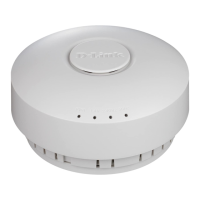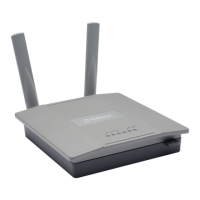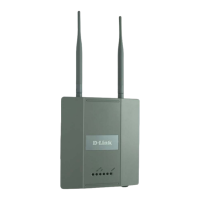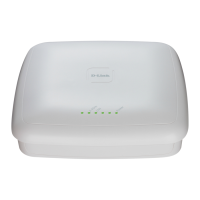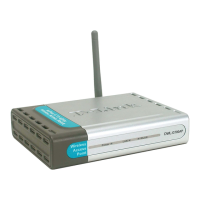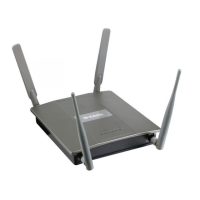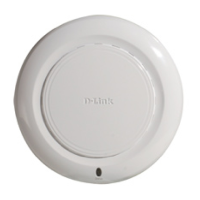Configuring Differentiated Services
D-Link Unified Wired and Wireless Access System
Oct. 2015 Page 344
D-Link UWS User Manual
Table 205: DiffServ Class Configuration Fields
Field Description
Class Selector To configure a new DiffServ class, select Create. To modify or view an existing
class, select the name of the class from the dropdown menu.
Class Name Enter a class name. To create a new class, select the class type and click
Submit. To rename an existing class, click Rename after you enter the class
name.
Class Type Lists all of the class types. Currently the hardware supports only the Class Type
value All, which means all the various match criteria defined for the class
should be satisfied for a packet match. All signifies the logical AND of all the
match criteria.
Class Layer 3 Protocol The DiffServ feature supports classification of IPv4 packets only.
Class Match Selector The menu lists all match criteria you can add to a specified class. To configure
the criteria, select a match criteria from the list, and then click Add Match
Criteria. The screen changes to the criteria configuration page for that class.
After you configure the criteria, click Submit to apply the criteria to the class
and return to the Class Configuration page. To return to the Class
Configuration page without applying the criteria, click Cancel. The match
criteria and configurable fields are as follows:
• Destination IP Address: Requires a packet’s destination IP address to
match the address listed here. In the IP Address field, enter a valid
destination IP address in dotted decimal format. In the IP Mask field, enter
a valid subnet mask to determine which bits in the IP address are
significant. Note that this is not a wildcard mask.
• Destination Layer 4 Port: Requires a packet’s TCP/UDP destination port to
match the port you select. Select the desired L4 keyword from the list on
which the rule can be based. If you select Other, the screen refreshes and
a Port ID field appears. E
nter a user-defined Port ID by which packets are
matched to the rule. The valid range is 0–65535.
• Any: All packets are considered to match the specified class and no
additional input information is needed.
• IP DSCP: Matches the packet’s DSCP to the class criteria’s when selected.
Select the DSCP type from the menu or enter a DSCP value to match. If you
select Other, enter a custom value in the DSCP Value field that appears.
The valid range is 0–63.
• IP Precedence: Matches the packet’s IP Precedence value to the class
criteria’s when Enter a value in the range of 0–7.
• IP TOS: Matches the packet’s Type of Service bits in the IP header to the
class criteria’s when selected and a value is entered. In the TOS Bits field,
enter a two-digit hexadecimal number to match the bits in a packet’s TOS
field. In the TOS Mask field, specify the bit positions that are used for
comparison against the IP TOS field in a packet.
